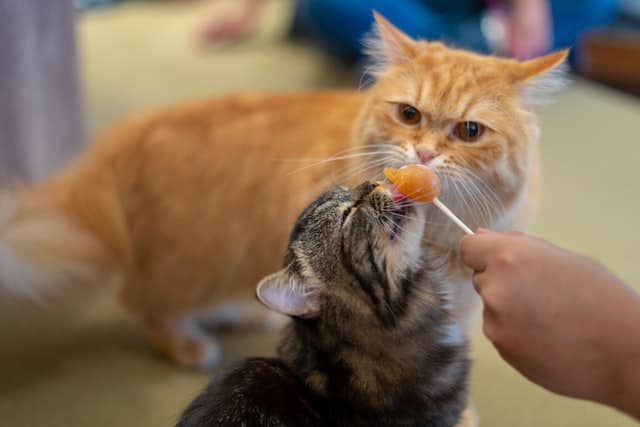Nutrients are substances that are obtained from food and in turn used by an animal as a source of energy and as part of the metabolic tools required for growth and maintenance.
Paying attention to the diet of your cat will guarantee your furry cat lives longer and healthier. Healthy nutrition can act as preventative medicine, and in turn, save you lots of money you’d normally spend in ridding your cat of any disease and complications.
Necessary Nutrients
Cats are obligate carnivores, and this means that they solely rely on nutrients found only in animal products. Cats evolved as hunters that consume prey – with high amounts of protein, fair amounts of fat, and little amount of carbohydrates. And still, yet, their diet needs these usual proportions today. Even more so, cats still need other nutrients, which includes: vitamins, fatty acid, amino acids, and minerals. Even though your cat needs soft cat foods or specific quantities of each specific nutrient to stay healthy, excess of those nutrients aren’t always better. And this is especially true of minerals and vitamins, so feeding your cat with supplements isn’t necessary if you’re feeding her a complete and balanced diet.
You might not believe this, but supplements can be harmful to your cat, and even more so, you can only give your cat a supplement when a veterinarian approves of it. Cats should have access to clean and fresh water at all times.
Examples of Commercial Cat Food
Commercial cat foods are formed as dry, semi-moist, and canned. These products differ in protein level, water content, caloric density, digestibility, and palatability.
Dry Food
Dry food comprises six to ten percent water. But it all depends on the particular formulation. A mixture of ingredients is mixed and dried into bite-sized pieces, these ingredients may include poultry and/or poultry by-products, fish meal, milk products, meat and/or meat by-products, fiber sources, grain and/or grain byproducts, vitamin and mineral supplements.
Furthermore, the pieces of dry food are often coated with flavor enhancers, such as animal fat, to make the food more appetizing. Dry cat food is relatively cheap, and since it doesn’t dry out, it gives owners the convenience of free-choice feeding. Nonetheless, dry food might be less tasty to a cat than semi-moist or moist food, depending on the quality and types of the ingredients. Even worse when a cat eats dry food it might be less digestible.
If you feed your cat with dry food, it’s vital to store extra portions in a cool and dry location. And don’t feed your cat the food if it’s expired. It’s common for cat owners to often buy large quantities of dry food that can be stored for months, so you must check the expiration date before serving it to your cat.
Going forward, storing your cat’s food for a long period reduces the potency of lots of vitamins and increases the possibility that fats will become strong. It’s a great idea to store dry cat food in a sealed container to help prevent nutrient decline.
Semi-Moist Food
Meat by-products and meats are the main ingredients of semi-moist food, and more so, contain about 35 percent moisture. Other materials, including cereals, grain by-products, soybean meal, and preservatives are combined to make the final product. The cost of semi-moist food isn’t that expensive. Although, semi-moist foods might be more appealing than dry cat food to some cats.
Canned Food
Canned cat food has a moisture content that’s relatively above 75 percent, thus making it a great dietary source of water. It’s usually the most costly type of cat food but is also highly tasty for most cats. More so, a lot of different variations are available, which can be helpful if your cat loves eating. Also, canned food has the longest shelf life when unopened, but any remaining portion of opened canned cat food should be stored in the fridge, to prevent spoilage and maintain quality.
Gourmet canned cat foods usually feature meats, that include whole meat by-product
and kidney or liver, as primary ingredients. Some brands may, however, be nutritionally incomplete. More so, it’s important to read the nutrition labels thoroughly to ensure they’ve got a nutritional guarantee.

Commercially processed cat foods have been improved to give your cat an accurate balance of calories and nutrients. Basic least nutritional essentials for cats have been verified by the Feline Nutrition Expert (FNE), a subcommittee of the Association of American Feed Control Officials (AAFCO). Manufacturers use these measures in producing cat foods.
Providing healthy food your cat will love can sometimes be a struggle. Rather than tackle this issue without any guidance, it’s best to use the tips stated above. By doing so, you can keep your beloved felines healthy and happy all the time.

